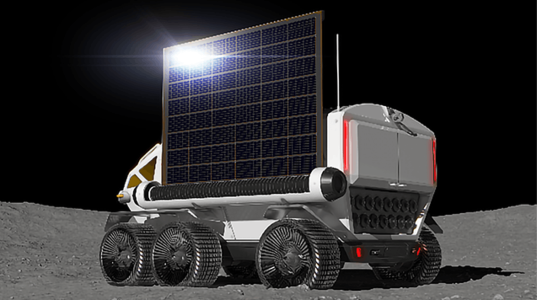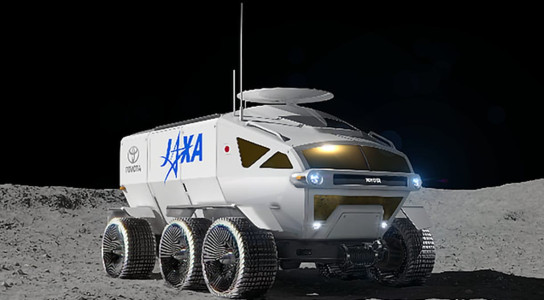
WHY THIS MATTERS IN BRIEF
It’s a question of when, not if, we go back to and live on the Moon, and we’ll need transportation…
 Interested in the future and want to experience even more?! eXplore More.
Interested in the future and want to experience even more?! eXplore More.
As more nation states, space agencies and billionaires, like China and NASA, Elon Musk, and Jeff Bezos, announce their plans to conquer the Moon, by building everything from Moon villages and Moon delivery services, to moving Earth’s heavy industry to its gentle grey, dusty slopes, one thing that none of them seemed to have been paying any attention to it how people travel around on Earth’s small cousin. But fortunately now, noticing the huge oversight, the Japan Aerospace Exploration Agency (JAXA) and Toyota have come to the rescue and announced they’ve agreed to work together to develop a concept for a manned lunar rover for “long-range Moon exploration.” And with a planned range of 10,000 km (6,200 mi) the rover would be about the size of two minibuses and could carry two passengers, or up to four in an emergency.
If the next generation of astronauts to reach the Moon expect to be more than tourists, then they’re going to need some serious transportation, and it looks like this fits the bill nicely.. Though Earth’s nearest neighbour may look small as it hangs up in the sky, it’s much larger than many people think, with a surface area equivalent to that of Africa. It also has some very rough, mountainous terrain and an environment that is the very definition of hostile.
All of this would be bad enough on Earth, but on the Moon any visitor has to move about in a pressure suit that makes even the simplest of tasks as difficult as deep sea diving in mixed-gas gear, and in which only the shortest of hikes is practical.
It’s for this reason that the later Apollo missions included a two-man electric go-kart to carry the astronauts and their gear. It’s also the reason why JAXA and Toyota are keen on the idea of a pressurised rover where explorers can work in a shirt sleeve environment and travel for thousands of miles at a go.
To achieve this, the partners are not only considering the basic design of the rover, but also how to power it. The Apollo rover relied on simple batteries, but the JAXA-Toyota rover at 6.0 x 5.2 x 3.8 m (19.7 x 17.1 x 12.5 ft) in size is a bit big for that – especially considering the specified range – so it would likely have to use Fuel Cells to run its systems. Few details have been released, but concept renderings indicate that it would also include a deployable solar panel, suggesting that it may recycle the waste water from the fuel cells to create more hydrogen and oxygen fuel.
“At JAXA, we are studying various scenarios as well as technologies that will be applied to specific space missions,” says JAXA Vice President Wakata, speaking at a symposium held this week in Tokyo’s Minato Ward. “Manned, pressurised rovers will be an important element supporting human lunar exploration, which we envision will take place in the 2030s. We aim at launching such a rover into space in 2029.”
“Lunar gravity is one-sixth of that on Earth. Meanwhile, the Moon has a complex terrain with craters, cliffs, and hills. Moreover, it is exposed to radiation and temperature conditions that are much harsher than those on Earth, as well as an ultra-high vacuum environment. For wide-ranging human exploration of the Moon, a pressurised rover that can travel more than 10,000 km in such environments is a necessity. Toyota’s ‘space mobility’ concept meets such mission requirements, and we’ve been jointly studying the concept of a manned, pressurized rover since May of 2018,” he added.
“Thus far, our joint study, has examined a preliminary concept for a manned, pressurised rover system, and we have identified the technological issues that must be solved. Going forward, we want to utilise Toyota’s and JAXA’s combined technologies, human resources, and knowledge, among others, to continuously solve those issues.”
“International space exploration is a challenge to conquer the unknown. To take up such a challenge, we believe it is important to gather our country’s technological capabilities and engage as ‘Team Japan.’ Through our collaboration with Toyota as the starting point, we can further expand the resources of ‘Team Japan’ in the continued pursuit of international space exploration.”
Source: JAXA



















You are amazing!!!